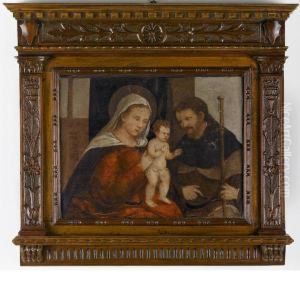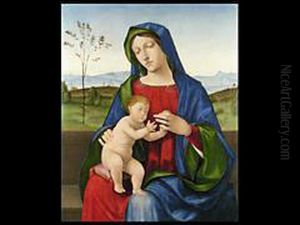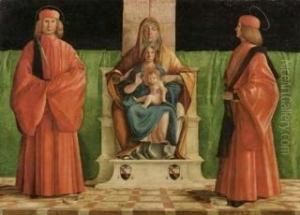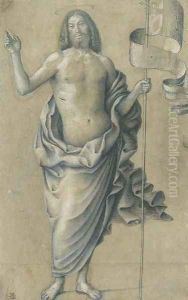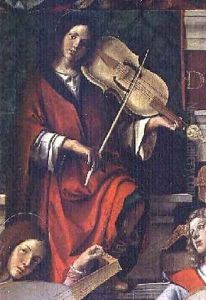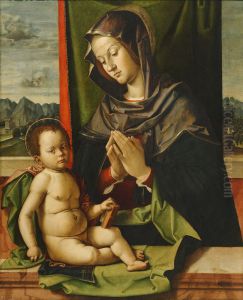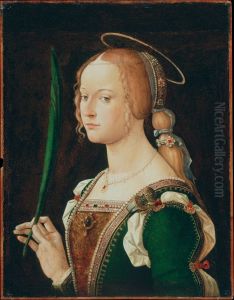Bartolomeo Montagna Paintings
Bartolomeo Montagna was an Italian painter and engraver of the Renaissance period, active mainly in Vicenza and the surrounding regions of the Veneto. Born around 1450, Montagna is thought to have trained in Venice, and his work exhibits the influence of Venetian masters such as Giovanni Bellini and Andrea Mantegna.
Montagna is best known for his religious paintings, primarily altarpieces, which often feature serene, harmonious compositions and a subtle use of color. He was adept at creating a sense of spatial depth and was particularly skilled in the rendering of textures and details, such as the intricate brocades of fabrics and the delicate features of his figures.
In the late 15th century, Montagna began to establish his reputation, and by the early 16th century, he had become the leading painter in Vicenza. His works from this period include the 'Madonna Enthroned with Saint John the Baptist and Saint Sebastian' (1499), now at the Musei Civici di Vicenza.
Apart from religious works, Montagna also produced mythological subjects and portraits, although these are less commonly found. His engravings, which are rare, show a clear influence from the Northern Renaissance, suggesting that he was familiar with the works of Albrecht Dürer and other northern artists.
Montagna's style evolved over his career, from the solid, sculptural forms of his early works, influenced by Mantegna, to a softer style with more atmospheric effects in his later years, showing the influence of Bellini and the emerging Venetian style characterized by artists like Giorgione and Titian.
Bartolomeo Montagna's contribution to the art of the Venetian Renaissance is significant, and his works can be found in various museums and churches in Italy. He passed away in 1523, leaving behind a legacy that would influence the development of Venetian painting well into the 16th century.

